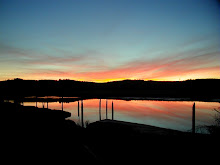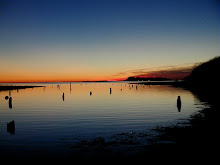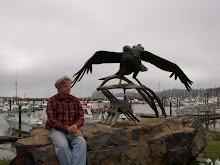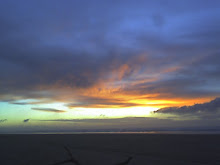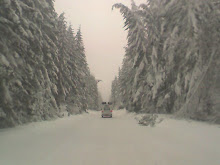Sustainability I,
This is going to be one of those posts that goes on forever.
In some of my more darker moments I see the modern discussion on sustainability as nothing more than a clever discussion by well meaning people as they re-arrange the deck chairs on the
Titantic while wearing cool
eyeware with
Ipod earbuds .
Why do I say this? Because as a biologist/ecologist/planner/natural historian..I am also forced to confront the ultimate question..what is going to mitigate human population growth? This unpopular question was very new wave 30 years ago (think Club of Rome, Limits to Growth, etc.) To arrive at that question is actually a consequence of something that a Native friend of mind said..that is when his elders make a decision, they make it thinking of the consequences of 7 generations. Seven generations is like somewhere around 175 years out. Talk about a planning horizon. Most planners are lucky to think 20 years in the future and few actually implement plans 10 years out.
Back to the deck chairs.
What's a hybrid got to do with it? (sung to my
fav Tina Turner tune). So I began to ask my dad and friends as well..when was the last time the beach was sustainable? We talked roads and ferries and electric light plants and on and on and on about when food begin to be imported (think canned food or staples like or sacks of rice, salt, sugar, or flour).
Here's what I came up with. The beach was pretty sustainable before about 1870-1880. I by beach I mean from
Knappton-Chinook to
Leadbetter Point. Before that period,
in migration was slow, a few settlers, a few Natives. It is likely that the population at that time was less than it was 100 years earlier as the Natives had suffered the
disastrous effects of epidemics (a theme I will return to) and the several thousands that
inhabited Pacific County
up to around the late 1700's had been reduced to a few hundred.
- Local food production was high (milk, beef, vegetables, fish, shellfish) and/or gathered (think hunting, clamming, oystering, etc.)
- Local building materials (sans nails and concrete) were plentiful and well used and that means local timber.
- Local transport was foot, wind or sun powered (horses).
- Local energy use was human power, horsepower, wind power, with some very likely modest inputs of coal and oil (think lamp oil).
By the late 1930's (6o years):
- Roads and vehicles connected the beach with SW Washington and Oregon.
- A local light plan powered light bulbs in homes.
- Coal and oil are imported energy sources.
- Internal combustion engines had replaced steam engines and steam engines had replaced by the former) replaced sailing vessels.
- Cars replaced horses.
- The train (clamshell railroad) had been and gone.
- Food was starting to be imported more frequently via newly built roads
- Building materials (plaster, concrete, steel, wire mesh finish lumber, etc.) began to be imported
By the 1970's
- Bridges replaced ferries and the road network is upgraded
- No local milk production...the dairies are long gone.
- No significant local beef production (which is to say, no locally sourced meat markets).
- No local green grocer (other than the farmers markets).
- All energy sourced from out of the area (nearly 100%) and that includes, oil, propane, gas and electricity. The local contribution of wood declines and/or is being replaced by pelletized wood imported from outside the area.
- Building materials..nearly if not 100% imported with the exception of crushed rock and sand (no concrete, asphalt, metals, glass, etc. is locally produced of course). I would hazard to guess that of all the trees cut in Pacific County, very few end up in local construction.
Today we are truly supported by the outside. Oddly enough, one trend is probably true today as it was 100 years ago and that is our death rate exceeds our birth rate and that only reason the population on the beach grows is due to in-migration. Without in migration, our population would retract and in a few decades we'd be like the Dakotas or Wyoming..a shrinking population.
I also like to think of sustainability as
elegance of action. A small amount of energy leveraged to a cumulative use to extract more
efficiency out of most anything. A really good example was a program sponsored by
WSU nearly 20 years ago where by a researcher went out to farmers and demonstrated how a tractor tune and clutch adjustment up could save fuel by making the engine 1) run more
efficiently and 2) making the most use that power by getting it to the ground..which equals
tractive horsepower. He went out with a portable
dynanometer and demonstrated before and after. This is why we use lower wattage bulbs, low flow water fixtures, pump up the tires in our vehicles, etc.
I've been puzzling over when the "beach" made a transition from locally sustainable to something else. This transition was probably around the late 1920's to mid 1930's and can be measured in a couple of ways, but three is one way in particular and that has to do with how we use energy.
Years and years ago, my Dad and I were talking with Ed
Chellis (born and raised on the beach) and he commented about how open the beach looked back in the day and that there were two primary
reasons. One was that the train used pine trees for fuel thus beach pine and spruce where cut for the fire box, the second was the train belched smoke and sparks and was always catching the grass on fire and the third was the open range allowed stock cattle/horses to browse and graze.
Dobie Wiegardt commented that you could easily see the
Klipsan Life Saving Station from Aunt Anna's house (
Potrimpos Gallery on Bay Avenue). There were also fewer drainage ditches and more wetlands, thus open space.
Ed remembered skating to
Oysterville from Ocean Park by way of a lake (long gone) that lay in
swale a ways east of the Methodist Church Camp.
The principal mode of transportation, that of a tree fed train and grass fed horses resulted in an altered landscape. By the late 1930's the train was long gone and cars and roads had replaced horses for nearly two decades. Cars needed fuel, roads went from hand and horse built to tractor built, ferries needed steam power and went from wood and coal fired to oil fired boilers.
Thus use of coal and then oil to power generators resulted in light plants being built and
Ilwaco had a light plant (Astoria as well). Doug Miller told me a few years ago that it was not surprising that that the first use of those plants was for lights thus "Light Plant". A 25 Watt service to a house was not uncommon and that lit a bulb, one
25 watt bulb! As dams were built on the Columbia River, we went from using ancient energy (oil) to
meltwater energy (snow) that flowed down the Columbia. I say flowed down the Columbia because most of that snow pack is in Canada and not in Washington, Oregon, Idaho, Wyoming, Utah, and Nevada. This watershed maps shows the real
deal.

So where am I going with this? Well that small cumulative and molecule by melting molecule process of water
melting is what powers us. It used to power fish but no more.
Here we are, at the mouth of the Columbia (which reminds me..if we are the mouth..where is the rest of the anatomy?) living off melting water.
 Dune Grass II
Dune Grass II Ok..let us start at the beginning and there is no better place to start than the beach circa 1900. At that time, the dominant dune grass growing on the Long Beach Peninsula was American Dune Grass and suffice to say, while it was the primary dune grass, it wasn't as dominant as present day dune grass.
Ok..let us start at the beginning and there is no better place to start than the beach circa 1900. At that time, the dominant dune grass growing on the Long Beach Peninsula was American Dune Grass and suffice to say, while it was the primary dune grass, it wasn't as dominant as present day dune grass. This aerial photo was taken in 1926 and is looking north from present day Long Beach towards Cranberry Road. The North Jetty had been in place about 10 years and there is a pretty clean sandy beach plain without much dune grass.
This aerial photo was taken in 1926 and is looking north from present day Long Beach towards Cranberry Road. The North Jetty had been in place about 10 years and there is a pretty clean sandy beach plain without much dune grass. At first, it wasn't that dominant. This 1950 aerial photo is in front of present day Long Beach and there are patches of dune grass here and there but the sandy plain is quite dominant. The North Jetty has been in place a tad over 3 decades and it doesn't look like the dune grass (probably European) is getting a super foot hold but it is appearing.
At first, it wasn't that dominant. This 1950 aerial photo is in front of present day Long Beach and there are patches of dune grass here and there but the sandy plain is quite dominant. The North Jetty has been in place a tad over 3 decades and it doesn't look like the dune grass (probably European) is getting a super foot hold but it is appearing.


















